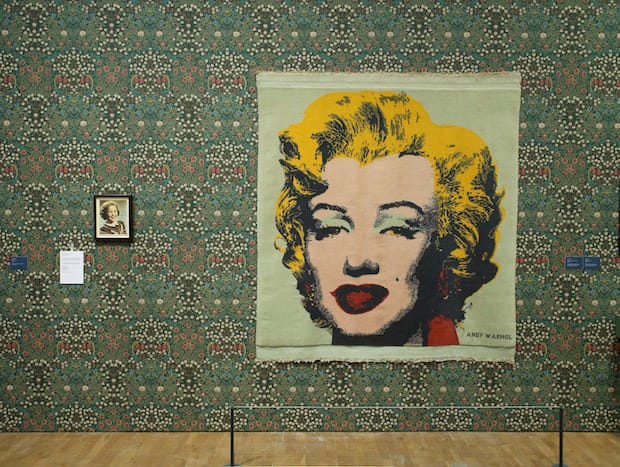Jeremy Deller has curated Love Is Enough, a show at Modern Art Oxford that defies both conventional wisdom and expectations by putting William Morris and Andy Warhol face to face with each other.
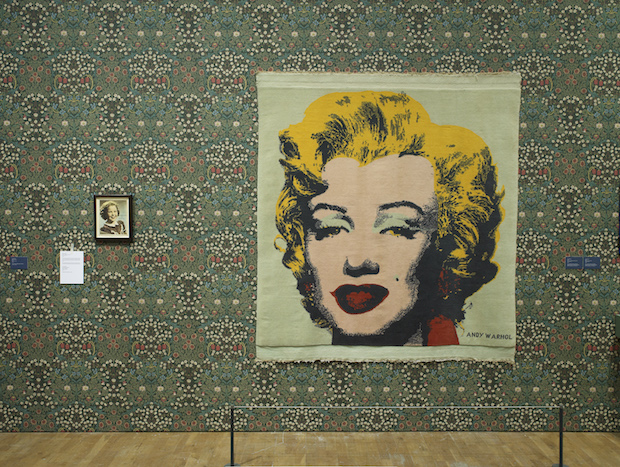
In an all-star line-up, Modern Art Oxford’s latest show sees works by William Morris and Andy Warhol curated by the Turner-prize winning artist Jeremy Deller, who took up Modern Art Oxford’s offer to tease out the (some-may-say unlikely) overlaps between his two greatest inspirations. Morris and Warhol, possibly the most influential artists of the nineteenth and twentieth centuries respectively, have both been known as divisive characters - Warhol with his embrace of mass-production and celebrity culture and Morris with his rejection of bourgeois Victorian values in favour of socialism and craft practices - yet they are divisive characters rarely mentioned in the same sentence before now.
The exhibition succeeds in its first task, that of making a combined Warhol and Morris exhibition seem conceptually viable, and thoughts of an overlap between the two artists start to appear obvious: both set up printing businesses, both toyed with the parallel ideas of the factory and the workshop, both used similar motifs (flowers and mythical people -whether they be King Arthur or Marilyn Monroe) and, most strikingly, each created work in mediums that reached a mass audience- Warhol set up Interview magazine, Morris designed wallpaper and home furnishings. Both were also prolific throughout their lives; on the early death of William Morris his doctor diagnosed the malady that lead to it as ‘simply being William Morris, and having done more work than most ten men’.
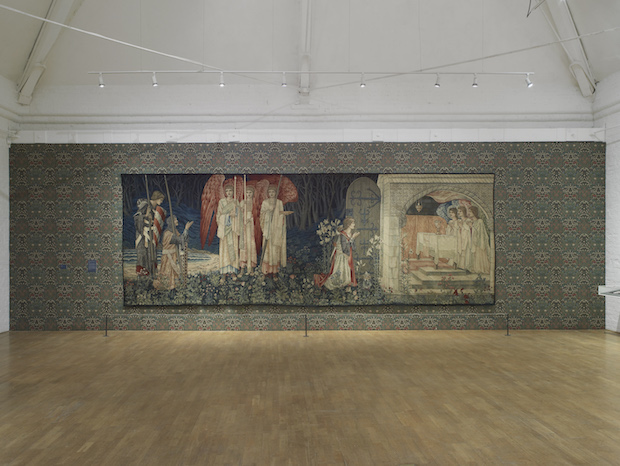
Love Is Enough, with its name taken from a morality play written by Morris in 1872, presents a chance to view many artworks and objects rarely seen in a public space, particularly this side of the Atlantic. A signed image of Shirley Temple sent to Warhol from the actress in 1941, when they were both thirteen-years old, is almost too perfect a reference to put next to the grown-up Warhol’s images of celebrities, insinuating there was a certain inevitability to his oeuvre. The rarely seen 26 foot long tapestry of The Vision of the Holy Grail by Morris and his collaborators is a piece of art only made more impressive by the knowledge that it is just one bit of a six-section tapestry. Its contemplative late-medieval style jarringly faces a vibrant Warhol tapestry of Marilyn Monroe, yet despite the aesthetic contrasts the presence of idols and the consistency of media reinforces Deller’s belief in the two artists’ relevance to one another. It also introduces visitors to the vitality of the exhibition as a whole.
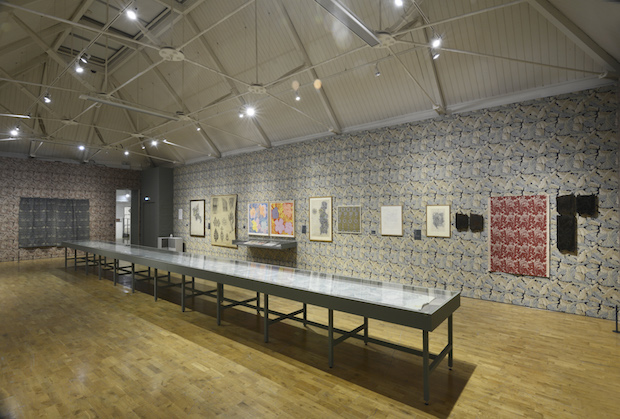
Deller has unabashedly covered many of the walls in Morris-designed wallpaper, showing an endearing lack of reverence for gallery conventions – and forcing the most apathetic of viewers to see a Warhol screenprint in contrast to a Morris pattern. In the final room of the exhibition, ‘Flower Power’, Morris’ natural motifs are deconstructed: the viewer is presented with a long scroll of wallpaper that shows the various stages of printing which go into making his dense patterns. Strip back a few of the more detailed layers of print and the wallpaper design descends into pop-art semi-abstraction; Warhol’s camouflage and flower screenprints meet Morris’ designs across the room like old friends. The same room also provides proof of the two artists’ technical cross-over: an old Warhol screen mingles with the wooden printing blocks used to create one of Morris’ wallpaper designs and initial sketches of patterns by Morris sit opposite delicate early illustrations from Warhol.
Deller’s assertion that Warhol, with whom he worked for two weeks in the summer of 1986, is a ‘deeply political artist’ brings up more thorny issues for debate; the comparison between Warhol’s screenprint American Race Riot and the Morris pamphlet How I Became A Socialist is interesting here only in terms of the stark contrast it presents. Almost all of Morris’ work, whether wallpaper or book or tapestry, is an embodiment of his anti-industrial stance, and his pamphlets and political writings testament to his tireless campaigning. Warhol’s screenprint is one of a few works that can be pointed to and called overtly political, but even here there’s a certain cool objectivity of representation. Warhol’s amorphous, mischievous persona couldn’t be more at odds with the earnest and politically minded Morris.
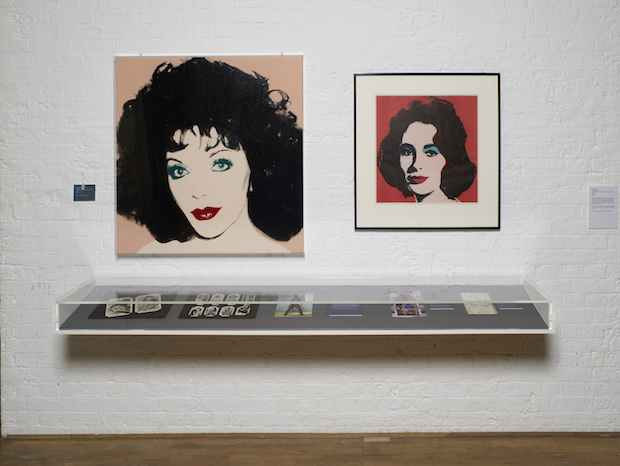
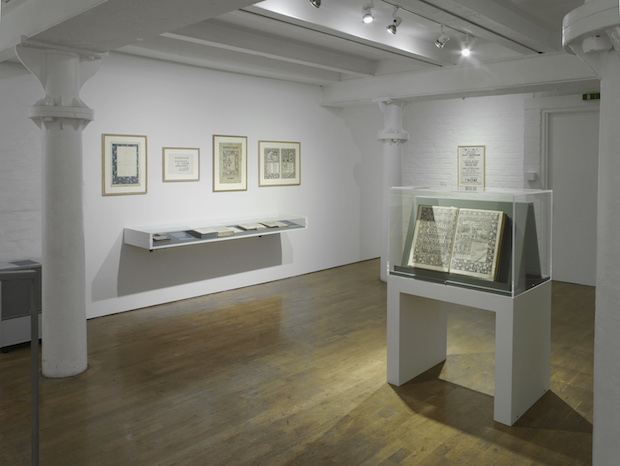
Yet this exhibition brings new life to the Victorian work on display: it could be argued that it has been a failure of some institutions to find a way of displaying Morris’ work, along with that of his followers in the Arts & Crafts movement, without making it seem irrelevant historicism. Now, however, both Modern Art Oxford and the National Portrait Gallery (with their exhibition Anarchy and Beauty) have succeeded in highlighting the immediacy of this work that deals with questions of making, the environment and tradition by placing it - at the National Portrait Gallery - within a tradition of British design that stretches throughout the twentieth century and - at Modern Art Oxford - in contrast to a twentieth century artist who at first may seem the antithesis of Morris. These contrasts and conflicts help to overcome Morris’ now disappearing unfashionability and to throw light upon his true motives. Through comparison with Warhol, sceptical viewers are less likely to see Morris’ work as English provinciality manifest as wallpaper and more a radical mantra against nineteenth century mass-production, with an interest in the mythical as seen through the eyes of pre-Hollywood society. In this, Jeremy Deller and Modern Art Oxford have pulled off a masterstroke. Love is Enough: William Morris & Andy Warhol
Modern Art Oxford
Until 8 March 2015
modernartoxford.org.uk

